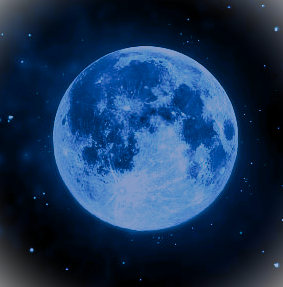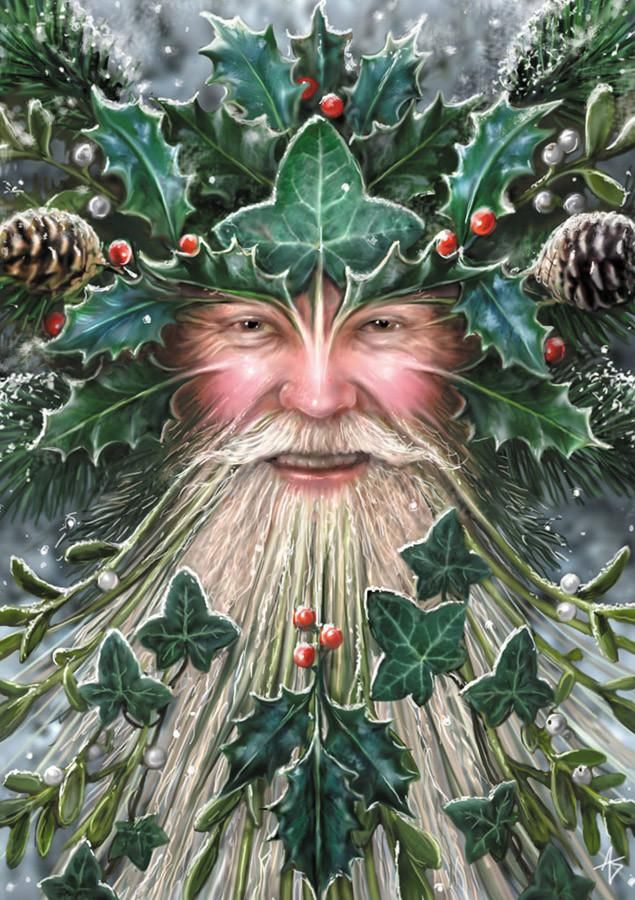BLACK & BLUE MOON

BLUE MOON in Capricorn
July 21, 2024 at 3:18am PDT
You’ve likely heard or even used the idiom “once in a blue moon”, which is meant to imply something rare. While it is true Blue Moons are not common, rare is a bit of an overstatement. They occur approximately every 2 or 3 years.
What is a Blue Moon?
Firstly, it has nothing to do with colour. The reasoning behind the name has many theories but there is nothing definitive so, despite my devotion to language and my love of etymology, we will leave the name as is. (Though, I might propose “White Moon” as a more appropriate name.)
So, what is a Blue Moon? The quick answer is the 13th full moon in a year, but not necessarily the last one. Most years have 12 full moons but every two to three years there is an extra full moon, and that extra full moon is called a Blue Moon. But, which one is the extra? Here are three definitions, listed from most to least commonly known. Unfortunately, all but one of these definitions is erroneous.
1) The second full moon in a calendar month
FALSE
The moon has absolutely no correlation with the Gregorian calendar (you may remember my Calendar Reform post from the Yule email). This is a misunderstanding of another erroneous definition (#2 below).
2) The third full moon in a season that has four full moons
FALSE
This is getting closer to the actual truth, but it is still an ignorant definition. This one is a misunderstanding – or lazy approach to – the true Blue Moon (#3 below).
3) The second full moon in a zodiac sign
TRUE
This is the actual, true Blue Moon. In a lot of cases, the second full moon in a zodiac sign happens to come as the third full moon in a season, but not always. You may see attempts to downplay the ultimate veracity of this definition by calling it the “astrological blue moon”.
What is a Black Moon?
A Black Moon is the second dark/new moon in a zodiac sign. This is the same definition as a Blue Moon, but applied to the dark/new Moon.
EBB & FLOW
Why Black & Blue Moons are important
The twelve zodiac signs form subgroups of 4s, 3s, and 2s around the Girdle. The modes and elements represent the 4s and 3s, while the 2s represent polarities as well as axial pairs. The axial pairs inform our experience of the Wheel of the Year and are key in lunation cycle energies.
Axial Pairs:
Aries/Libra
Taurus/Scorpio
Gemini/Sagittarius
Cancer/Capricorn
Leo/Aquarius
Virgo/Pisces
The Moon travels around the Girdle 12 times in a year but, because the sidereal (movement through the 12 zodiac signs) and synodic (phases) cycles of the moon differ by a few days, every two to three years there is an overlap as the cycles adjust. This is where the Blue and Black Moons happen.
Like the tides, lunar cycles have ebb and flow times which bring the sidereal and synodic cycles together.
In the flow time, the dark/new moon leads, meaning there is a dark/new moon in the same sign as the sun followed two weeks later by a full moon in its axial opposite (i.e. dark/new moon in Aries followed by a full moon in Libra). Flow time tends to feel more natural because energies are moving in a “forward” motion.
Then a Black Moon occurs and the cycle shifts to an ebb time.
In the ebb time, the full moon of the pair occurs first, followed by a dark/new moon in the axial opposite (i.e. full moon in Capricorn followed by a dark/new moon in Cancer). Ebb time can sometimes feel a bit challenging because the current feels like it’s moving “backwards”.
Then a Blue Moon occurs and the cycle shifts back to a flow time.
We are currently in an ebb time. On July 21, 2024 (3:18am PDT) there will be a Blue Moon and we will shift back to a flow time.
